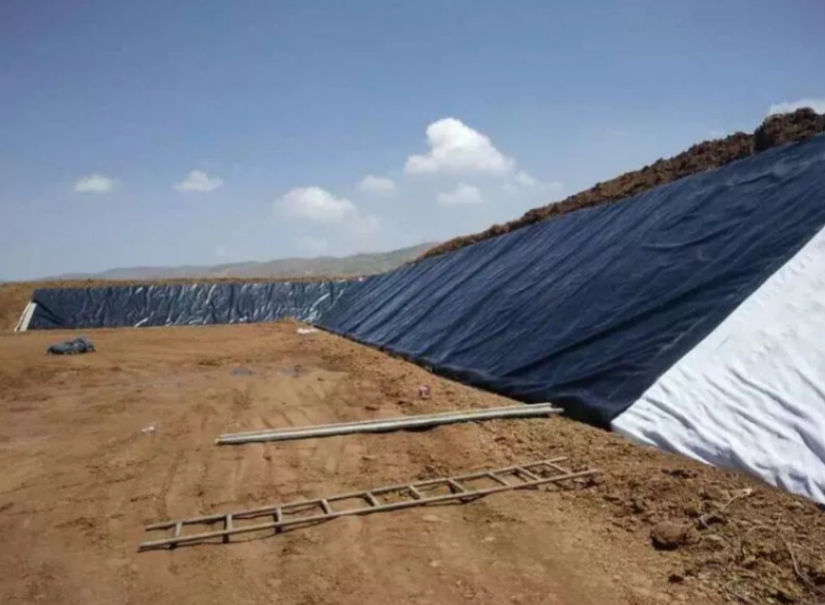
-
 Español
Español
-
 Portugues
Portugues
-
 Pусский
Pусский
-
 Français
Français
-
 Deutsch
Deutsch
-
 日本語
日本語
-
 한국어
한국어
-
 العربية
العربية
-
 Italiano
Italiano
-
 Nederlands
Nederlands
-
 Ελληνικά
Ελληνικά
-
 Svenska
Svenska
-
 Polski
Polski
-
 ไทย
ไทย
-
 Türk dili
Türk dili
-
 हिन्दी
हिन्दी
-
 Indonesia
Indonesia
-
 Melayu
Melayu
-
 Tiếng Việt
Tiếng Việt
-
 中文
中文
-
 dansk
dansk
-
 Magyar
Magyar
-
 қазақ
қазақ
-
 বাংলা
বাংলা
-
 עִברִית
עִברִית
-
 čeština
čeština
-
 Soomaali
Soomaali
-
 မြန်မာ
မြန်မာ
-
 فارسی
فارسی
-
 українська
українська
-
 norsk
norsk
-
 Gaeilge
Gaeilge
-
 беларускі
беларускі
-
 Română
Română
-
 ພາສາລາວ
ພາສາລາວ
-
 Filipino
Filipino
-
 lietuvių
lietuvių
-
 Cymraeg
Cymraeg
-
 македонски
македонски
-
 Suomalainen
Suomalainen
-
 slovenský
slovenský
-
 o'zbek
o'zbek
-
 اردو
اردو
-
 հայերեն
հայերեն
-
 Igbo
Igbo
-
 български
български
-
 سنڌي
سنڌي
-
 Shona
Shona
-
 සිංහල
සිංහල
-
 Hrvatski
Hrvatski
-
 íslenskur
íslenskur
-
 galego
galego
-
 català
català
-
 Zulu South Africa
Zulu South Africa
-
 Afrikaans isiXhosa
Afrikaans isiXhosa
-
 ಕನ್ನಡ
ಕನ್ನಡ
-
 lëtzebuergesch
lëtzebuergesch
-
 Indonésia Sunda
Indonésia Sunda
-
 basa jawa
basa jawa
-
 ગુજરાતી
ગુજરાતી
-
 Кыргызча
Кыргызча
-
 тоҷикӣ
тоҷикӣ
-
 Србија
Србија
-
 Twi
Twi
-
 Hawaii
Hawaii
-
 Cebu
Cebu
-
 नेपाल
नेपाल
-
 euskara
euskara
-
 Kurdî
Kurdî
-
 frissi
frissi
-
 יידיש
יידיש
-
 latvija
latvija
-
 slovenija
slovenija
-
 kiswahili
kiswahili
-
 ਪੰਜਾਬ
ਪੰਜਾਬ
-
 پښتو
پښتو
-
 საქართველოს
საქართველოს
-
 hua moni
hua moni
-
 bosna
bosna
-
 తెలుగు
తెలుగు
-
 தமிழ்
தமிழ்
-
 Kreyòl ayisyen
Kreyòl ayisyen
-
 Eesti
Eesti
-
 Corsica
Corsica
-
 Yoruba
Yoruba
-
 Gàidhlig na h-Alba
Gàidhlig na h-Alba
-
 Samoa
Samoa
-
 Монгол
Монгол
-
 Hausa
Hausa
-
 Azərbaycan
Azərbaycan
-
 አማራ
አማራ
-
 Shqipëria
Shqipëria
-
 Malagasy
Malagasy
-
 मराठी
मराठी
-
 മലയാളം
മലയാളം
-
 Malta
Malta
-
 ខ្មែរ
ខ្មែរ
-
 Chicheva
Chicheva
-
 中文(繁体)
中文(繁体)
-
 ଓଡିଆ
ଓଡିଆ
-
 Setswana
Setswana
-
 Afrikaans
Afrikaans
-
 Aymara
Aymara
-
 Башҡорт
Башҡорт
-
 Türkmenler
Türkmenler
-
 ትግሪኛ
ትግሪኛ
-
 Afaan Oromoo
Afaan Oromoo
-
 অসমীয়া
অসমীয়া
-
 Kinyarwanda
Kinyarwanda
-
 Ilocano
Ilocano
-
 Wolof
Wolof
-
 अवधी
अवधी
-
 Oluganda
Oluganda
-
 Bikol
Bikol
-
 Fulɓe
Fulɓe
-
 Kikongo
Kikongo
-
 Sango
Sango
-
 ދިވެހި
ދިވެހި
-
 Lingala
Lingala
-
 मैथिली
मैथिली
-
 Tsonga
Tsonga
-
 ꯃꯦꯏ ꯊꯥꯏ꯫
ꯃꯦꯏ ꯊꯥꯏ꯫
-
 brezhoneg
brezhoneg
-
 Furlan
Furlan
-
 नेवा
नेवा
-
 རྫོང་ཁ
རྫོང་ཁ
-
 Santali
Santali
-
 Аҧсуа
Аҧсуа
-
 Нохчийн
Нохчийн
-
 Чӑваш
Чӑваш
-
 Татар
Татар
-
 Batak Karo
Batak Karo
-
 دری
دری
-
 Diura
Diura
-
 Fengyu
Fengyu
-
 Eʋegbe
Eʋegbe
-
 Iban
Iban
-
 Fiji
Fiji
-
 Tonga
Tonga
-
 Inuktitut
Inuktitut
-
 Nahuatl
Nahuatl
-
 maaya yucatec
maaya yucatec
-
 Runasimi
Runasimi
-
 guarani
guarani
-
 Qafar
Qafar
-
 Acholi
Acholi
-
 Dinka
Dinka
-
 Luo
Luo
-
 Lundi
Lundi
-
 isiNdebele
isiNdebele
-
 Tshivenḓa
Tshivenḓa
-
 Sesotho sa Leboa
Sesotho sa Leboa
-
 Sesotho sa Borwa
Sesotho sa Borwa
-
 Ndumbe
Ndumbe
-
 Papuan Pidgin
Papuan Pidgin
-
 Rromani ćhib
Rromani ćhib
-
 Thok Nath
Thok Nath
yuxiatugong@163.com
+86 18353494641
-
 Español
Español
-
 Portugues
Portugues
-
 Pусский
Pусский
-
 Français
Français
-
 Deutsch
Deutsch
-
 日本語
日本語
-
 한국어
한국어
-
 العربية
العربية
-
 Italiano
Italiano
-
 Nederlands
Nederlands
-
 Ελληνικά
Ελληνικά
-
 Svenska
Svenska
-
 Polski
Polski
-
 ไทย
ไทย
-
 Türk dili
Türk dili
-
 हिन्दी
हिन्दी
-
 Indonesia
Indonesia
-
 Melayu
Melayu
-
 Tiếng Việt
Tiếng Việt
-
 中文
中文
-
 dansk
dansk
-
 Magyar
Magyar
-
 қазақ
қазақ
-
 বাংলা
বাংলা
-
 עִברִית
עִברִית
-
 čeština
čeština
-
 Soomaali
Soomaali
-
 မြန်မာ
မြန်မာ
-
 فارسی
فارسی
-
 українська
українська
-
 norsk
norsk
-
 Gaeilge
Gaeilge
-
 беларускі
беларускі
-
 Română
Română
-
 ພາສາລາວ
ພາສາລາວ
-
 Filipino
Filipino
-
 lietuvių
lietuvių
-
 Cymraeg
Cymraeg
-
 македонски
македонски
-
 Suomalainen
Suomalainen
-
 slovenský
slovenský
-
 o'zbek
o'zbek
-
 اردو
اردو
-
 հայերեն
հայերեն
-
 Igbo
Igbo
-
 български
български
-
 سنڌي
سنڌي
-
 Shona
Shona
-
 සිංහල
සිංහල
-
 Hrvatski
Hrvatski
-
 íslenskur
íslenskur
-
 galego
galego
-
 català
català
-
 Zulu South Africa
Zulu South Africa
-
 Afrikaans isiXhosa
Afrikaans isiXhosa
-
 ಕನ್ನಡ
ಕನ್ನಡ
-
 lëtzebuergesch
lëtzebuergesch
-
 Indonésia Sunda
Indonésia Sunda
-
 basa jawa
basa jawa
-
 ગુજરાતી
ગુજરાતી
-
 Кыргызча
Кыргызча
-
 тоҷикӣ
тоҷикӣ
-
 Србија
Србија
-
 Twi
Twi
-
 Hawaii
Hawaii
-
 Cebu
Cebu
-
 नेपाल
नेपाल
-
 euskara
euskara
-
 Kurdî
Kurdî
-
 frissi
frissi
-
 יידיש
יידיש
-
 latvija
latvija
-
 slovenija
slovenija
-
 kiswahili
kiswahili
-
 ਪੰਜਾਬ
ਪੰਜਾਬ
-
 پښتو
پښتو
-
 საქართველოს
საქართველოს
-
 hua moni
hua moni
-
 bosna
bosna
-
 తెలుగు
తెలుగు
-
 தமிழ்
தமிழ்
-
 Kreyòl ayisyen
Kreyòl ayisyen
-
 Eesti
Eesti
-
 Corsica
Corsica
-
 Yoruba
Yoruba
-
 Gàidhlig na h-Alba
Gàidhlig na h-Alba
-
 Samoa
Samoa
-
 Монгол
Монгол
-
 Hausa
Hausa
-
 Azərbaycan
Azərbaycan
-
 አማራ
አማራ
-
 Shqipëria
Shqipëria
-
 Malagasy
Malagasy
-
 मराठी
मराठी
-
 മലയാളം
മലയാളം
-
 Malta
Malta
-
 ខ្មែរ
ខ្មែរ
-
 Chicheva
Chicheva
-
 中文(繁体)
中文(繁体)
-
 ଓଡିଆ
ଓଡିଆ
-
 Setswana
Setswana
-
 Afrikaans
Afrikaans
-
 Aymara
Aymara
-
 Башҡорт
Башҡорт
-
 Türkmenler
Türkmenler
-
 ትግሪኛ
ትግሪኛ
-
 Afaan Oromoo
Afaan Oromoo
-
 অসমীয়া
অসমীয়া
-
 Kinyarwanda
Kinyarwanda
-
 Ilocano
Ilocano
-
 Wolof
Wolof
-
 अवधी
अवधी
-
 Oluganda
Oluganda
-
 Bikol
Bikol
-
 Fulɓe
Fulɓe
-
 Kikongo
Kikongo
-
 Sango
Sango
-
 ދިވެހި
ދިވެހި
-
 Lingala
Lingala
-
 मैथिली
मैथिली
-
 Tsonga
Tsonga
-
 ꯃꯦꯏ ꯊꯥꯏ꯫
ꯃꯦꯏ ꯊꯥꯏ꯫
-
 brezhoneg
brezhoneg
-
 Furlan
Furlan
-
 नेवा
नेवा
-
 རྫོང་ཁ
རྫོང་ཁ
-
 Santali
Santali
-
 Аҧсуа
Аҧсуа
-
 Нохчийн
Нохчийн
-
 Чӑваш
Чӑваш
-
 Татар
Татар
-
 Batak Karo
Batak Karo
-
 دری
دری
-
 Diura
Diura
-
 Fengyu
Fengyu
-
 Eʋegbe
Eʋegbe
-
 Iban
Iban
-
 Fiji
Fiji
-
 Tonga
Tonga
-
 Inuktitut
Inuktitut
-
 Nahuatl
Nahuatl
-
 maaya yucatec
maaya yucatec
-
 Runasimi
Runasimi
-
 guarani
guarani
-
 Qafar
Qafar
-
 Acholi
Acholi
-
 Dinka
Dinka
-
 Luo
Luo
-
 Lundi
Lundi
-
 isiNdebele
isiNdebele
-
 Tshivenḓa
Tshivenḓa
-
 Sesotho sa Leboa
Sesotho sa Leboa
-
 Sesotho sa Borwa
Sesotho sa Borwa
-
 Ndumbe
Ndumbe
-
 Papuan Pidgin
Papuan Pidgin
-
 Rromani ćhib
Rromani ćhib
-
 Thok Nath
Thok Nath

News Center
News Center
HOT PRODUCT
Waterproof Sheet Roll for Large Scale Roofing Projects
2025-10-10 07:52:45

Waterproof Sheet Roll for Large-Scale Roofing Projects
Introduction
Waterproofing is a critical aspect of construction, particularly for large-scale roofing projects where durability, longevity, and resistance to environmental factors are essential. Waterproof sheet rolls are widely used in commercial, industrial, and residential roofing applications due to their ease of installation, cost-effectiveness, and superior performance in preventing water infiltration.
This comprehensive guide explores waterproof sheet rolls for large-scale roofing projects, covering material types, installation methods, benefits, challenges, and best practices to ensure optimal performance.
---
1. Types of Waterproof Sheet Rolls for Roofing
Several types of waterproof sheet rolls are available, each with unique properties suited for different roofing applications. The most common materials include:
1.1 Bituminous Membranes (Modified Bitumen)
Bituminous waterproofing membranes are made from asphalt or coal tar modified with polymers such as APP (Atactic Polypropylene) or SBS (Styrene-Butadiene-Styrene). These sheets are reinforced with polyester or fiberglass for added strength.
- Advantages:
- High flexibility and durability
- Excellent resistance to UV rays (when coated)
- Self-adhesive options available for easier installation
- Applications: Flat roofs, industrial buildings, and commercial structures.
1.2 PVC (Polyvinyl Chloride) Membranes
PVC waterproofing sheets are thermoplastic membranes known for their chemical resistance and flexibility.
- Advantages:
- Lightweight and easy to install
- Resistant to chemicals, punctures, and UV exposure
- Heat-welded seams provide superior waterproofing
- Applications: Green roofs, balconies, and large commercial roofs.
1.3 TPO (Thermoplastic Polyolefin) Membranes
TPO sheets are single-ply membranes made from a blend of polypropylene and ethylene-propylene rubber.
- Advantages:
- Energy-efficient (reflects sunlight, reducing cooling costs)
- Environmentally friendly (recyclable)
- Resistant to mold, algae, and punctures
- Applications: Warehouses, hospitals, and schools.
1.4 EPDM (Ethylene Propylene Diene Monomer) Rubber Membranes
EPDM is a synthetic rubber membrane known for its elasticity and weather resistance.
- Advantages:
- Long lifespan (up to 50 years)
- Resistant to extreme temperatures (-40°C to +120°C)
- Can be installed in large sheets, reducing seams
- Applications: Low-slope roofs, stadiums, and industrial facilities.
1.5 HDPE (High-Density Polyethylene) Geomembranes
HDPE sheets are rigid, high-strength membranes used in extreme conditions.
- Advantages:
- High chemical and UV resistance
- Excellent tensile strength
- Suitable for exposed and buried applications
- Applications: Water containment, landfills, and industrial roofing.
---
2. Installation Methods for Waterproof Sheet Rolls
Proper installation is crucial to ensure the effectiveness of waterproof sheet rolls. The most common installation techniques include:
2.1 Fully Adhered System
- The membrane is glued to the substrate using adhesives or bonding agents.
- Provides strong adhesion and prevents water infiltration.
- Suitable for high-wind areas.
2.2 Mechanically Fastened System
- The membrane is secured using fasteners and plates.
- Faster installation compared to fully adhered systems.
- Ideal for large roofs with minimal penetrations.
2.3 Ballasted System
- The membrane is laid loose and held in place with gravel, pavers, or concrete blocks.
- Cost-effective and easy to install.
- Best for flat roofs with low foot traffic.
2.4 Heat-Welded System (for PVC & TPO)
- Sheets are joined using hot air welding, creating seamless waterproofing.
- Ensures strong, leak-proof seams.
- Requires skilled labor for proper execution.
2.5 Self-Adhesive System
- Pre-coated membranes with adhesive backing simplify installation.
- No additional adhesives or heat required.
- Suitable for DIY projects and quick repairs.
---
3. Benefits of Using Waterproof Sheet Rolls in Large-Scale Roofing
3.1 Superior Waterproofing Performance
- Prevents leaks, mold growth, and structural damage.
- Seamless installation reduces weak points.
3.2 Durability and Longevity
- Resistant to UV rays, temperature fluctuations, and mechanical stress.
- Lifespan ranges from 20 to 50 years, depending on material.
3.3 Cost-Effectiveness
- Lower maintenance costs compared to traditional roofing materials.
- Quick installation reduces labor expenses.
3.4 Energy Efficiency
- Reflective membranes (TPO, PVC) reduce cooling costs.
- Contributes to sustainable building practices.
3.5 Flexibility in Design
- Available in various colors and thicknesses.
- Can be customized for complex roof shapes.
---
4. Challenges and Solutions in Waterproof Sheet Roll Installation
4.1 Seam Integrity
- Challenge: Poorly welded or adhered seams can lead to leaks.
- Solution: Use certified installers and quality welding equipment.
4.2 Substrate Preparation
- Challenge: Uneven surfaces can cause membrane damage.
- Solution: Ensure proper leveling and priming before installation.
4.3 Weather Conditions
- Challenge: Extreme heat or cold affects adhesion.
- Solution: Follow manufacturer guidelines for temperature ranges.
4.4 Puncture Risks
- Challenge: Foot traffic or debris can damage the membrane.
- Solution: Use protective coatings or walkway pads.
---
5. Best Practices for Waterproof Sheet Roll Installation
1. Inspect the Roof Substrate: Ensure it is clean, dry, and free of debris.
2. Choose the Right Material: Select based on climate, roof type, and budget.
3. Follow Manufacturer Guidelines: Adhere to recommended installation techniques.
4. Ensure Proper Sealing: Pay special attention to seams, edges, and penetrations.
5. Conduct Post-Installation Inspections: Check for bubbles, wrinkles, or weak spots.
6. Schedule Regular Maintenance: Inspect annually and repair minor damages promptly.
---
6. Environmental and Sustainability Considerations
- Recyclability: TPO and PVC membranes can be recycled.
- Cool Roof Benefits: Reflective membranes reduce urban heat island effects.
- Low VOC Emissions: Many modern membranes are eco-friendly.
---
7. Conclusion
Waterproof sheet rolls are an excellent choice for large-scale roofing projects due to their durability, ease of installation, and superior waterproofing performance. By selecting the right material, following proper installation techniques, and adhering to maintenance best practices, contractors can ensure long-lasting protection against water damage.
As the construction industry continues to prioritize sustainability and energy efficiency, waterproof sheet rolls will remain a key component in modern roofing solutions. Whether for commercial, industrial, or residential applications, these membranes provide a reliable and cost-effective waterproofing solution.
Investing in high-quality waterproof sheet rolls not only safeguards buildings from water damage but also enhances energy efficiency and reduces long-term maintenance costs, making them an indispensable choice for large-scale roofing projects.








 Phone
Phone
Comment
(0)